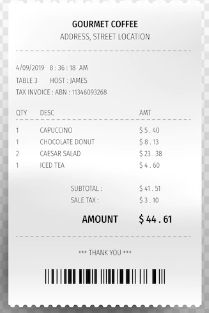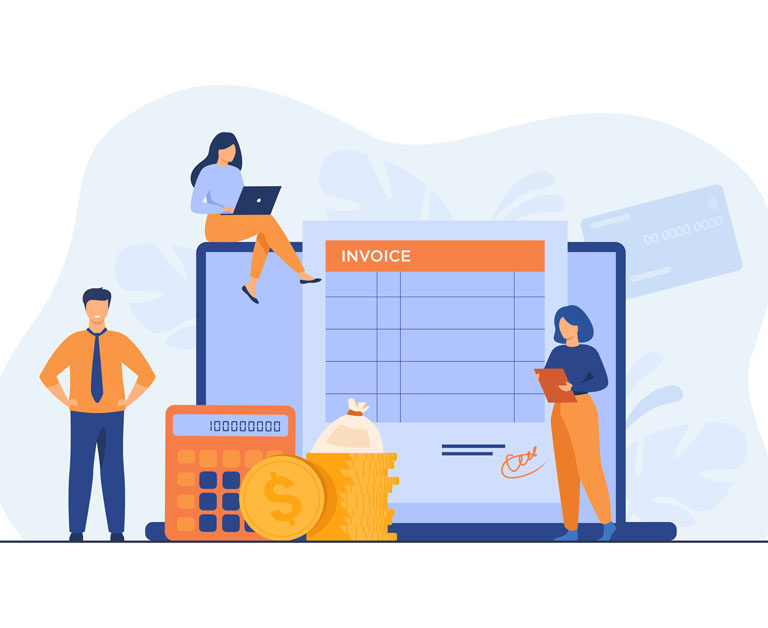NEW Rules for Tax Invoices
New rules for tax invoices are being introduced which will modernise invoicing and record keeping, these new rules will come into effect from the 1st April 2023. There were also changes to the rules for GST tax invoices which took effect from the 30th March 2022. This is the first time that tax invoice rules are being updated since the introduction of GST in 1986. The rule changes aim to make record keeping for GST easier and to align with changes within the tech world like the introduction of e-invoicing. You do not need to change the name on your Invoices read below about the changes.
This post may contain affiliate links which means I receive a small commission at no cost to you when you make a purchase
What changes are being made?
- Taxable supply information – The requirement to use tax invoices is being replaced with the requirement to provide and keep certain records known as taxable supply information.
- New terms
- Special wording won’t be required
- Taxable supply information for members of a GST group or supplier group
- Date for providing taxable supply information to the buyer
- Supply correction information – currently debit & credit notes
New Terms
| Old Term | New Term |
| Tax Invoice | Taxable supply information |
| Debit note / Credit note | Supply correction information |
| Buyer-created tax invoice | Buyer-created taxable supply information |
Taxable Supply Information
Taxable supply information can be collected from various sources that support your GST claims. Documents such as transaction records, accounting systems and contract documents may contain all the information that you need to support the figures that you have included in your GST returns.
You will no longer be required to keep a single physical copy of GST documents including tax invoices and credit notes. The operative words being a physical copy, you must still have copies however these can be electronic. The use of Xero Files for document storage can be used or an app like Hubdoc.
Learn how to:
- Setup Hubdoc
- Automatically import documents
- Sync Hubdoc to Xero
- Troubleshoot common error
- Add and manage integrations
As mentioned above you do not need to change the wording of tax invoice to taxable supply information. Current rules required the use of Tax Invoice in a prominent place on your GST invoice.
Changes to Record Requirements
The changes for invoice requirements are different depending on the value of the purchase or sale. IRD has a GST record keeping requirements dropdown on their article under taxable supply information. We have included a summary below of the information required below that needs to be shown on an invoice to claim GST on different values:
Purchases/Sales less than $200
- Name of Supplier
- Date of invoice, or if no invoice is issued it needs to include the date of supply
- Description of goods or services supplied
- Amount paid
You will still need more than just the eftpos docket to make a claim on purchases less than $200 as eftpos dockets do not include the description of goods or services supplied.

Purchases/Sales $200-$1,000
- All of the above requirements for purchases less than $200 and
- GST registration number of the supplier/seller
- If GST is included – show the amount “including GST”
- If GST is Excluded – show the amount, GST total lines
Purchases/Sales over $1,000
- All of the above requirements for purchases between $200-$1,000 and
- Buyers details – including one or more of the following
- Billing address
- phone number
- trading name
- NZBN
- website
For second hand goods, the taxable supply information required is the same as for purchases less than $200. When purchasing from Trademe or an online supplier ensure that you at least download/print the auction information as this will show the date the auction was won, the price paid and a description of the goods purchased. You may also need to download emails that include the sellers’ name and address so that you have all the information required to make a GST claim.
For sales over $200 you must issue the taxable supply information to GST registered customers within 28 days of the sale and for sales to non-GST registered customers, the information must be sent within 28 days of the customer requesting the information.
It would be best to just continue issuing invoices to all customers when they make purchases to ensure that you are complying with the rules and to include all GST information on all invoices as it will be annoying to switch between invoice templates when you are making sales of different values all the time.
In most cases you, will be supplying more information than required if you are invoicing out of an accounting software especially if it isn’t a cash sale as you will need to enter the buyers name on the invoice to ensure you can chase the correct customer at the end of the month for payment. For those making cash sales in a store, you could name all customers under $1,000 cash sale as this information isn’t required to be included on an invoice under this value.
The new invoicing rules mean that businesses that currently issue valid tax invoices now can continue doing as they are after the 1st April 2023 and you won’t need to make any changes to your invoices to continue complying with the new rules. However, all businesses need to be aware that after this date they can accept GST invoices that don’t include the words “Tax Invoice” on themand also need to be aware of what information is required on taxable supply information at various values to be able to claim the GST deductions.








